Dial Restoration: Aesthetics Or Functionality? And How To Decide
by Ashton Tracy
Dial restoration is a moot point in the broader horological context.
On forums and in personal talks with collectors around the world, however, it is an endlessly debated topic. The overwhelming majority of collectors have landed firmly in the “no” camp with the masses preferring untouched, virgin examples.
The vintage market is so hot right now, though, that immaculate examples seem to be the only choices collectors will even take into consideration.
We can all agree that re-painting a dial is a big no-no. Vintage pieces with re-painted dials can be had for a steal as they are difficult to shift and mostly unwanted.
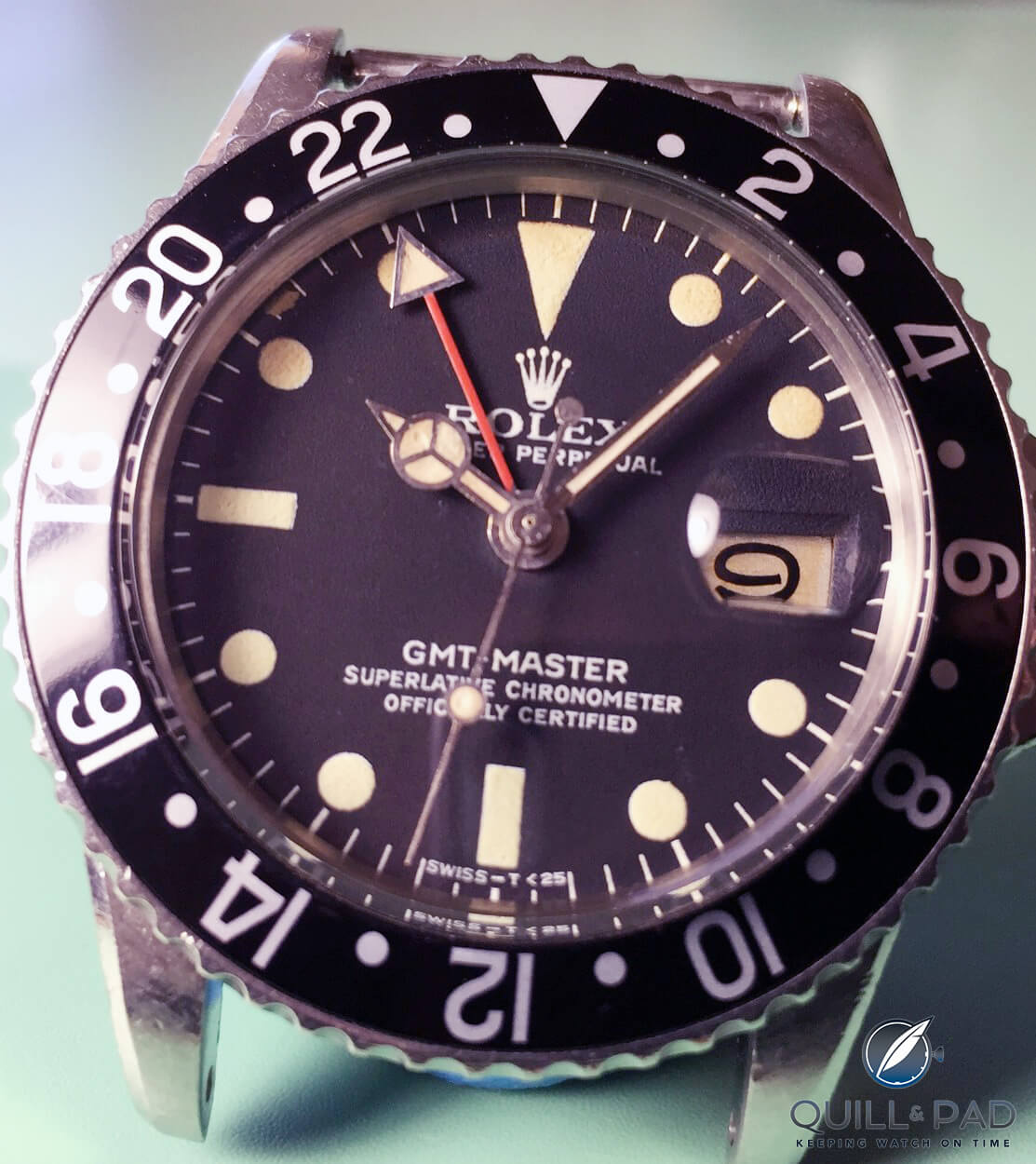
Period-correct lume restoration on a Rolex GMT-Master (photo Ashton Tracy)
But not all dial restorations are created equal, and we do encounter varying degrees of “upgrades.” In recent times, the trend of re-luming (removing old luminous paint and re-applying with new) dials and hands seems to be taking the world by storm.
Re-applying luminous compound to watch dials and hands is not new, however. For decades watchmakers have been “upgrading” the luminous compound on customers’ dials. A customer would complain to his watchmaker that the dial had faded over time, making it difficult to read at night, and the watchmaker would happily re-apply a new compound without another thought.
The goal of this was functionality.
This trend went on for decades until collectors began rejecting such watches as the luminous substance was often poorly applied, evidence that the watch was no longer original.
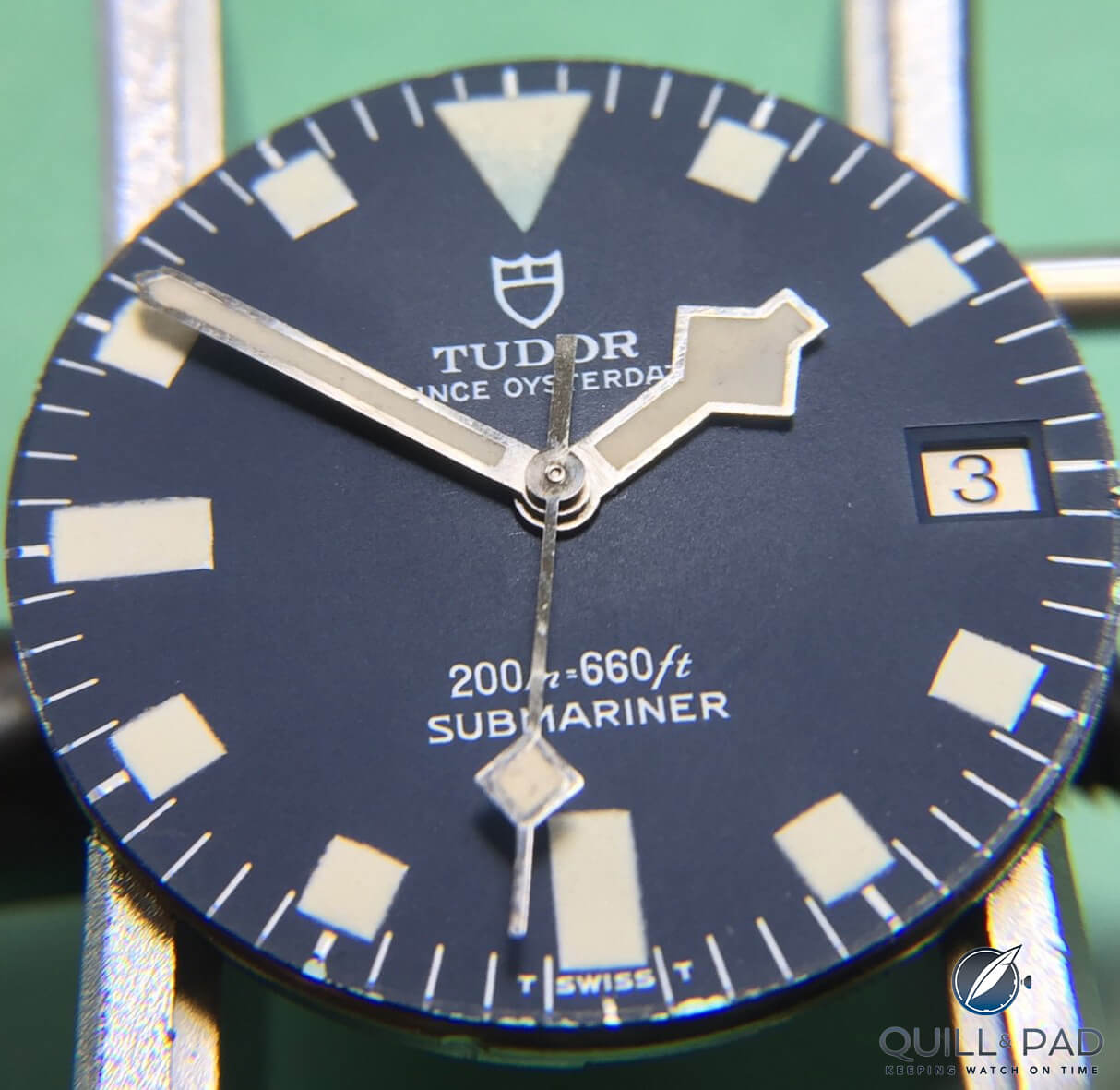
Restored vintage Tudor dial (photo Ashton Tracy)
Watch restoration: the current aesthetics trend
The current trend is one that is very different from the methods of times past. Aesthetics, not functionality, is the new goal.
Talented watchmakers are using their skills to restore dials in ways very different from the work of past watchmakers. Period-correct luminous compound is being applied to dials that are damaged or have been poorly re-lumed. Similar occurs with watch hands that have been badly re-painted or where the lume has crumbled or been destroyed by moisture.
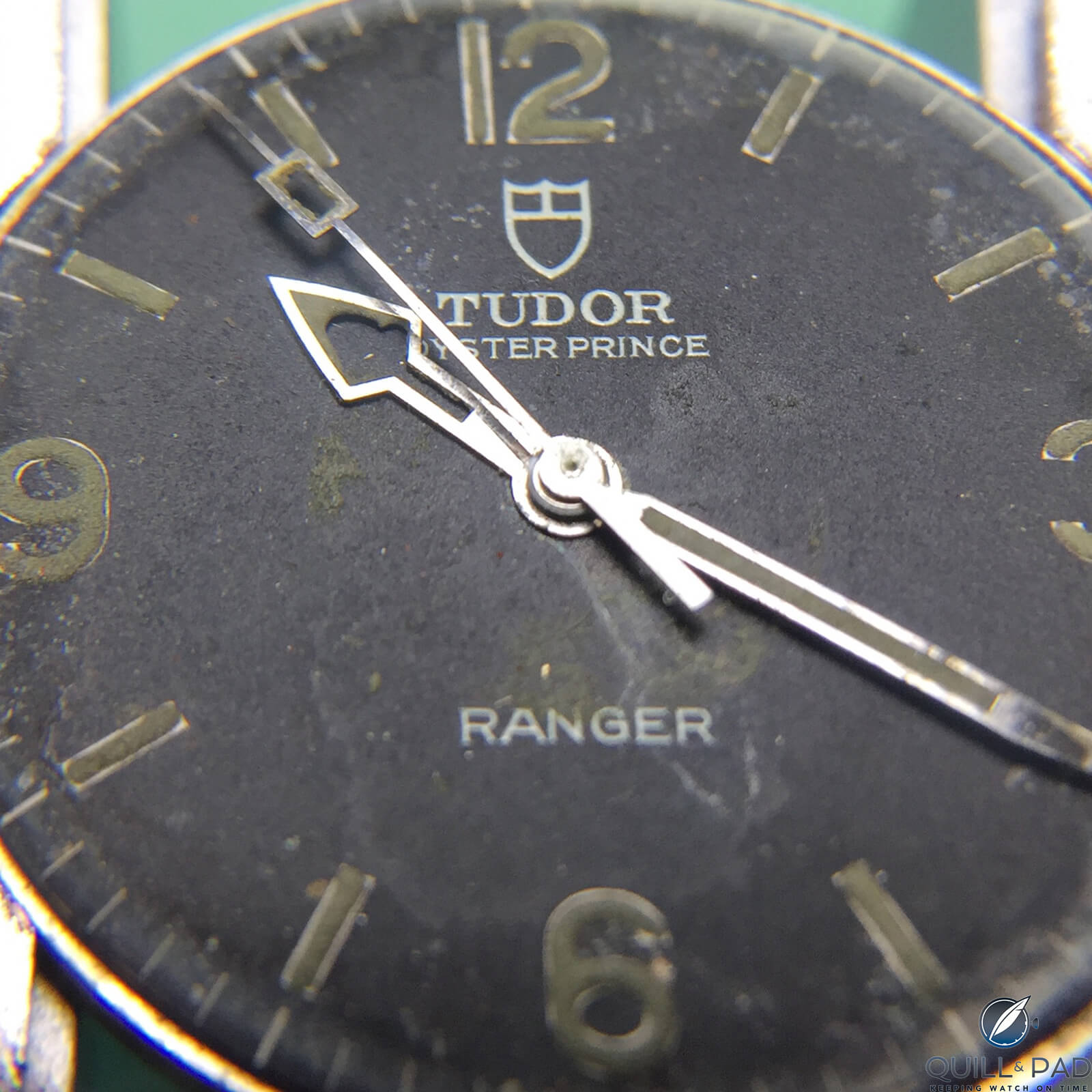
A water-damaged Tudor Ranger dial (photo Ashton Tracy)
Perhaps the most famous example of a re-lumed dial is the Rolex Pink Stelline. Here is a watch with a poorly re-lumed dial that, mind you, sold at auction for 315,750 Swiss francs in 2015 at Antiquorum.
That is considerably less than an untouched example, which sold for 1,265,000 million CHF the very same day at the Phillips auction. That’s not even the exciting part, though: that very same watch with the badly re-lumed dial sold again in 2019 at Christie’s for 975,000 CHF (including buyer’s premium).
Why the jump? The dial had, once again, undergone a restoration of its lume. But this time, it was done with a period color-correct, radium-based luminous compound.
The fact that this watch sold for this sum of money opens up a whole world of questions about the vintage watch market. Is period-correct re-luming of dials an acceptable option? Or is it trickery, deception?
Like most subjects within the world of wider watch collecting, people seem to fall into two camps.
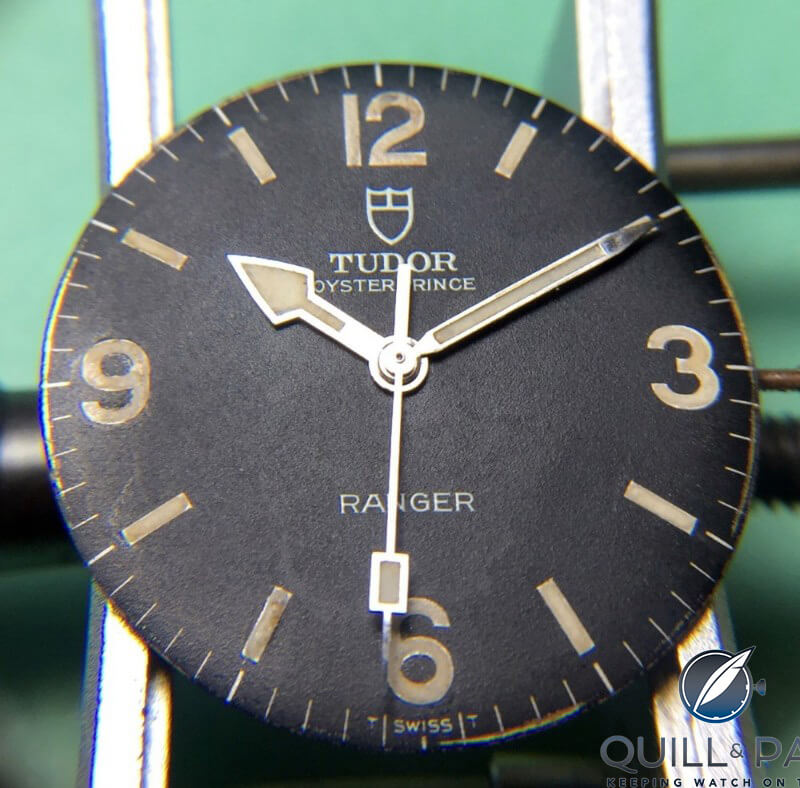
The water-damaged Tudor Ranger dial after restoration (photo Ashton Tracy)
I recently posted a picture of a dial and handset that I personally re-lumed for a customer on my Instagram. It was a vintage Tudor Ranger that had sustained substantial moisture damage. The lume was destroyed, having turned moldy and spread over the entire dial. It was cracked and looked ghastly.
The customer decided he wanted the watch to look period correct, similar to what an original Tudor Ranger that hadn’t been affected by the elements would look like today.
Many of the comments on my social media were positive, some were not. I was struck by one gentleman who was disturbed by what I was doing and accused me of trying to trick people into thinking the watch was original.
I can assure all that this was not my intent. The satisfaction of my customer’s needs was my only thought.
I have restored a few luminous dials and many more badly matched handsets in my time.
Mostly, I’ve received compliments on what a good job I had done, but this comment got me thinking: was I engaging in deception? Is this in the same wheelhouse as helping a customer install an aftermarket dial and handset? If this watch ends up sold as original, do I bear some of the blame?
Dial restorations: not created equal, neither are re-lumes
How is a watch dial re-lumed?
If one wants to make a dial or hands appear new, a Super-LumiNova compound is used, which is the current industry standard. Various methods need to be employed to make a watch dial look aged as applying straight Super-LumiNova will make it look new.
The type of dial that is usually “aged” is one that would have initially used tritium-based luminous compound or, if older, as in the case of the Rolex Pink Stelline, radium-based paint.
Radium is a controlled substance, and very few people have the authorization to work with it today. I can almost guarantee none of those people are watchmakers.
Tritium is very difficult to find, but there are people around that have stocks of it and use it today.
Old tritium stock is manipulated to make the dial or handset appear aged, or period correct, and is done so by a handful of people around the world. People who are very good at what they do.
The dials and hands in question appear so correct that they only glow when exposed to UV light and, in some cases, are indistinguishable from an untouched vintage example.
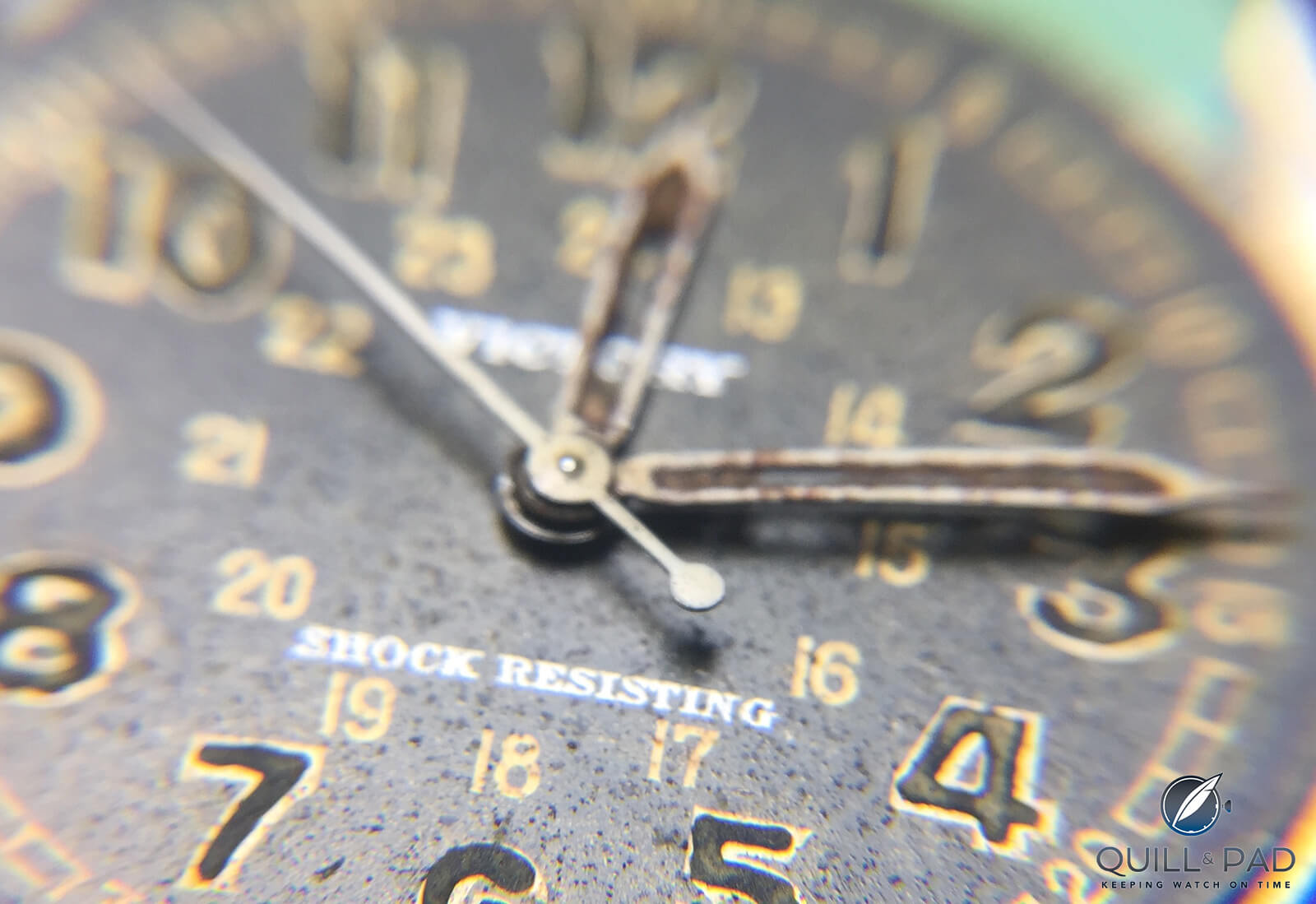
A Rolex Oyster dial before restoration (photo Ashton Tracy)
Another method of aging involves Super-LumiNova that is colored and textured to appear old. It can either still glow or not at all.
If the decision is to have the dial or hands emit light, the lume will glow after being exposed to natural light, not just UV light.
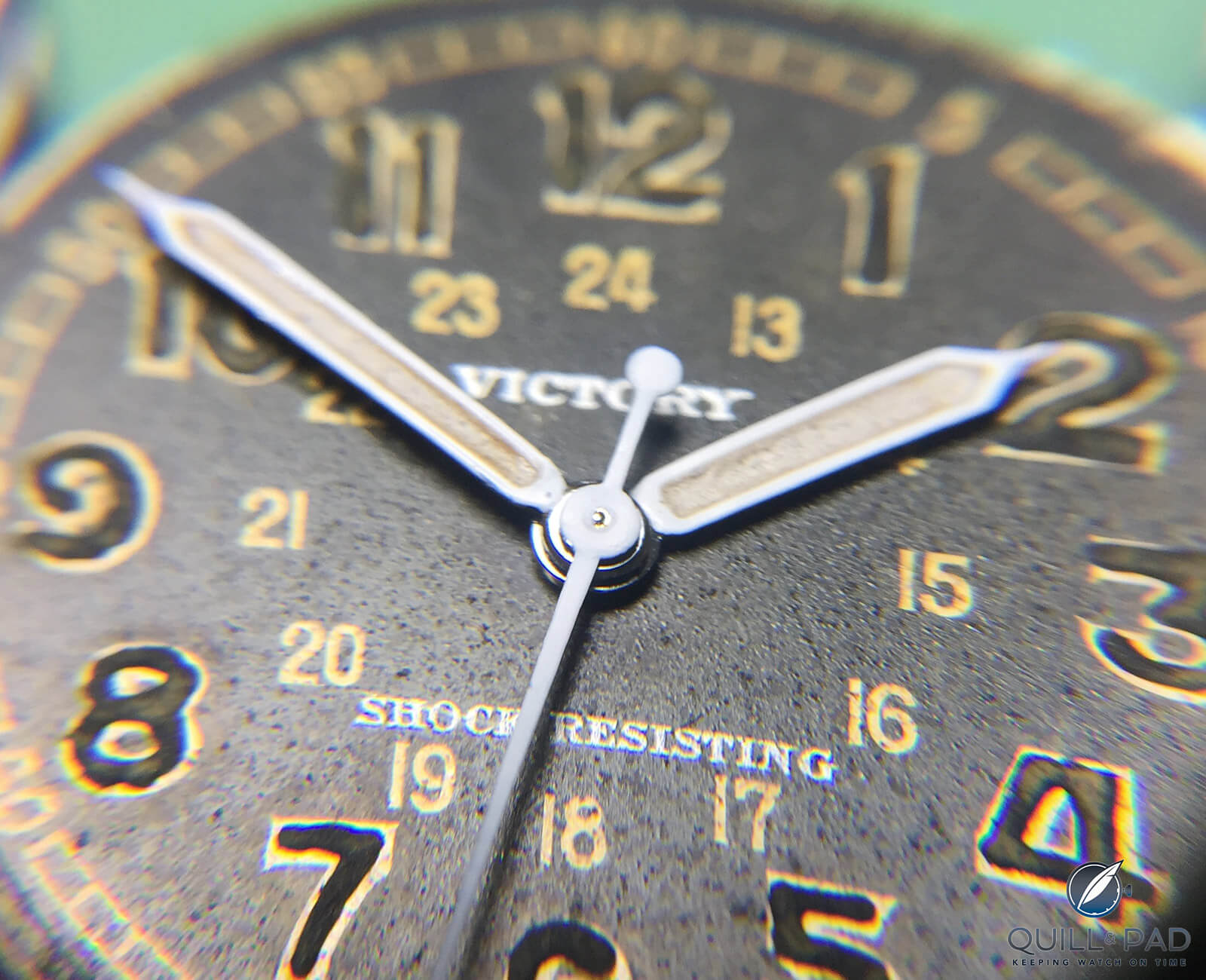
The Rolex Oyster dial after restoration (photo Ashton Tracy)
Or in the case of no luminosity, it won’t glow under UV light at all. The dial and/or hands appear old from a visual standpoint, but the authenticity can be easily verified.
In the case of the Rolex Pink Stelline, documentation proves that the watch is not an original untouched example, and it will never sell claiming that it is.
The owner wanted his watch to look and be period correct, which I’m sure everyone can understand when spending that kind of money. But he was never trying to pull the wool over anyone’s eyes.
General thoughts on original form
The current astronomically high prices on the vintage market is fueling the trickery and deception we see so common among vintage watches today.
And dials and hands aren’t the only area suffering: we see cases that have been refinished throughout their life laser welded, re-lapped, and then faux aged to be sold on as an “original.”
Sadly, when such large sums of money are involved, this is now part and parcel of vintage watch collecting and something that everyone needs to be aware of.
One must ask the question: is it really possible that there are so many untouched examples of these vintage pieces floating around the world today?
Watches sent to service centers for repair have their cases refinished, parts updated, and damaged dials swapped out. When watches go in for warranty repairs, they are often given a touch-up polish as a courtesy to the customer, a fact that most aren’t aware of.
The answer to my above-posed question is a clear no.
But back to the original question: is the re-luming of dials a dishonest practice creating a minefield for unsuspecting buyers of vintage watches?
If the watch has been re-lumed using an aged Super-LumiNova, then I vote no as the authenticity and originality can be easily verified.
But if tritium is the choice, then definitely.
You may also enjoy:
The Superficial Value In Refinishing/Refurbishing Rolexes: A Watchmaker’s Rant
The Number Of Jewels In A Watch Movement Indicates Value, Doesn’t It? A Myth Debunked
Leave a Reply
Want to join the discussion?Feel free to contribute!



I read the article by Ashton Tracy about dial restoration with interest. I have a vintage Tutor Submariner, reference number 7016/0, model number 624875. I want to sell it but it has a badly done relume of years ago. I would be interested in talking to Mr. Tracy about working on it and perhaps buying it or helping me sell it if he is interested. Can you give me his phone or email address so that I might discuss this with him?
Brent Moseley 1-228-493-1335